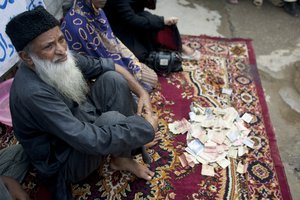- published: 19 May 2013
- views: 77
-
remove the playlistCentrul Civic
- remove the playlistCentrul Civic
- published: 16 Apr 2016
- views: 242
- published: 23 Jun 2016
- views: 40

Centrul Civic
Centrul Civic (Romanian: [ˈt͡ʃentrul ˈt͡ʃivik], the Civic Center) is a district in central Bucharest, Romania, which was completely rebuilt in the 1980s as part of the scheme of systematization under the dictator Nicolae Ceauşescu.
Bucharest suffered significant damage due to Allied bombing during World War II and the devastating earthquake of March 4, 1977. However, neither of these events changed the face of the city more than the Ceausescan "redevelopment schemes" of the 1980s, under which an overall area of eight square kilometers of the historic center of Bucharest were leveled, including monasteries, churches, synagogues, a hospital, and a noted Art Deco sports stadium. This also involved evicting 40,000 people after a single day's notice and relocating them to new homes, in order to make way for the grandiose Centrul Civic and the House of the Republic, now officially renamed as the Palace of Parliament.
Centrul Civic is a complex of modern concrete buildings with marble façades, centered on a boulevard originally meant to be "the Boulevard of the Victory of Socialism". Being renamed after the Romanian Revolution of 1989 the Union ("Unirii") Boulevard, it has been modeled after Paris's Champs-Élysées, though a little wider; it runs roughly east-west, making a grand approach to the Palace of Parliament at its western terminus. A large balcony in the Palace surveys the entire length of the boulevard.
This article is licensed under the Creative Commons Attribution-ShareAlike 3.0 Unported License, which means that you can copy and modify it as long as the entire work (including additions) remains under this license.
- Loading...

-
 0:29
0:29Brasov Centrul Civic
Brasov Centrul CivicBrasov Centrul Civic
-
 1:52
1:522014,Brasov,Centrul Civic
2014,Brasov,Centrul Civic2014,Brasov,Centrul Civic
-
 2:52
2:52Giratoriu Centrul Civic Brasov
Giratoriu Centrul Civic BrasovGiratoriu Centrul Civic Brasov
http://www.robertlazar.info -
 12:10
12:10RESITA: Revelion 2016 in Centrul Civic
RESITA: Revelion 2016 in Centrul CivicRESITA: Revelion 2016 in Centrul Civic
-
 1:14
1:14Aglomeratie in centrul civic, Brasov
Aglomeratie in centrul civic, BrasovAglomeratie in centrul civic, Brasov
str. Kogalniceanu, ora 8:45, in timpul saptamanii. -
 0:42
0:42CENTRUL CIVIC VASLUI
CENTRUL CIVIC VASLUICENTRUL CIVIC VASLUI
-
 4:10
4:10Sabin Păuță - Concert simfonic în Centrul Civic
Sabin Păuță - Concert simfonic în Centrul CivicSabin Păuță - Concert simfonic în Centrul Civic
Serbările Reșiței -
 6:30
6:30Expozitie de vehicole istorice in Centrul Civic al Municipiului Vaslui
Expozitie de vehicole istorice in Centrul Civic al Municipiului VasluiExpozitie de vehicole istorice in Centrul Civic al Municipiului Vaslui
Expozitie organizata de RETROMOBIL CLUB ROMANIA, editia a II-a, cea mai importanta Asociatie a Proprietarilor de Vehicole Istorice, eveniment organizat de doua ori pe an, in primavera si-n toamna. (16 Aprilie 2016) -
 0:26
0:26Centrul Civic Resita Time-lapse
Centrul Civic Resita Time-lapseCentrul Civic Resita Time-lapse
Directed by Lighe Montaje SUBSCRIBE,LIKE AND SHARE FOR MORE LIGHE MONTAJE STUDIO Contact us: FB/lighe.montaje and TW/ @LighezanRuben Do not forget to watch in HD is much better! Thank you for support! -
 0:18
0:18Asfaltare cartier Centrul Civic
Asfaltare cartier Centrul Civic
-

Brasov Centrul Civic
-

2014,Brasov,Centrul Civic
-

Giratoriu Centrul Civic Brasov
http://www.robertlazar.info -

RESITA: Revelion 2016 in Centrul Civic
-

Aglomeratie in centrul civic, Brasov
str. Kogalniceanu, ora 8:45, in timpul saptamanii. -

CENTRUL CIVIC VASLUI
-

Sabin Păuță - Concert simfonic în Centrul Civic
Serbările Reșiței -

Expozitie de vehicole istorice in Centrul Civic al Municipiului Vaslui
Expozitie organizata de RETROMOBIL CLUB ROMANIA, editia a II-a, cea mai importanta Asociatie a Proprietarilor de Vehicole Istorice, eveniment organizat de doua ori pe an, in primavera si-n toamna. (16 Aprilie 2016) -

Centrul Civic Resita Time-lapse
Directed by Lighe Montaje SUBSCRIBE,LIKE AND SHARE FOR MORE LIGHE MONTAJE STUDIO Contact us: FB/lighe.montaje and TW/ @LighezanRuben Do not forget to watch in HD is much better! Thank you for support! -

Brasov Centrul Civic
- Order: Reorder
- Duration: 0:29
- Updated: 19 May 2013
- views: 77
- published: 19 May 2013
- views: 77
2014,Brasov,Centrul Civic
- Order: Reorder
- Duration: 1:52
- Updated: 01 Jan 2014
- views: 41
- published: 01 Jan 2014
- views: 41
Giratoriu Centrul Civic Brasov
- Order: Reorder
- Duration: 2:52
- Updated: 18 Aug 2010
- views: 1482
RESITA: Revelion 2016 in Centrul Civic
- Order: Reorder
- Duration: 12:10
- Updated: 01 Jan 2016
- views: 607
- published: 01 Jan 2016
- views: 607
Aglomeratie in centrul civic, Brasov
- Order: Reorder
- Duration: 1:14
- Updated: 07 Mar 2013
- views: 1376
- published: 07 Mar 2013
- views: 1376
CENTRUL CIVIC VASLUI
- Order: Reorder
- Duration: 0:42
- Updated: 16 Dec 2015
- views: 44
- published: 16 Dec 2015
- views: 44
Sabin Păuță - Concert simfonic în Centrul Civic
- Order: Reorder
- Duration: 4:10
- Updated: 01 Jul 2016
- views: 3
- published: 01 Jul 2016
- views: 3
Expozitie de vehicole istorice in Centrul Civic al Municipiului Vaslui
- Order: Reorder
- Duration: 6:30
- Updated: 16 Apr 2016
- views: 242
- published: 16 Apr 2016
- views: 242
Centrul Civic Resita Time-lapse
- Order: Reorder
- Duration: 0:26
- Updated: 23 Jun 2016
- views: 40
- published: 23 Jun 2016
- views: 40
Asfaltare cartier Centrul Civic
- Order: Reorder
- Duration: 0:18
- Updated: 10 May 2016
- views: 156
- Playlist
- Chat
- Playlist
- Chat

Brasov Centrul Civic
- Report rights infringement
- published: 19 May 2013
- views: 77

2014,Brasov,Centrul Civic
- Report rights infringement
- published: 01 Jan 2014
- views: 41

Giratoriu Centrul Civic Brasov
- Report rights infringement
- published: 18 Aug 2010
- views: 1482

RESITA: Revelion 2016 in Centrul Civic
- Report rights infringement
- published: 01 Jan 2016
- views: 607

Aglomeratie in centrul civic, Brasov
- Report rights infringement
- published: 07 Mar 2013
- views: 1376

CENTRUL CIVIC VASLUI
- Report rights infringement
- published: 16 Dec 2015
- views: 44

Sabin Păuță - Concert simfonic în Centrul Civic
- Report rights infringement
- published: 01 Jul 2016
- views: 3

Expozitie de vehicole istorice in Centrul Civic al Municipiului Vaslui
- Report rights infringement
- published: 16 Apr 2016
- views: 242

Centrul Civic Resita Time-lapse
- Report rights infringement
- published: 23 Jun 2016
- views: 40

Asfaltare cartier Centrul Civic
- Report rights infringement
- published: 10 May 2016
- views: 156
iPhone 8 Leaks, New iPhone 7 Features Reported
Edit Inquisitr 09 Jul 2016Pakistan's 'Angel of Mercy' Edhi Dies at 88
Edit WorldNews.com 08 Jul 2016Wimbledon 2016: Serena Williams beats Angelique Kerber to win 22nd Grand Slam
Edit BBC News 09 Jul 2016South Sudan independence day violence leaves nearly 150 dead
Edit CNN 09 Jul 2016Dallas shooting: Newlywed, Iraq veteran among police officers killed
Edit Deccan Chronicle 09 Jul 2016PMC to standardize quality of compost
Edit The Times of India 10 Jul 2016Smart City drowns in 2006 re-run
Edit The Times of India 10 Jul 2016KCB seeks collector's help to solve waste mess
Edit The Times of India 10 Jul 2016Who are your local heroes? (Harrow London Borough Council)
Edit Public Technologies 10 Jul 2016Jaatkhedi: 8 houses collapse, two hurt
Edit The Times of India 10 Jul 2016Ford Shelby GT350R-C Wins At Home At Canadian Tire Motorsport Park, Multimatic’s Maxwell, Johnson Score Victory (IMSA - International Motor Sports Association LLC)
Edit Public Technologies 10 Jul 2016Dallas scarred again by national tragedy after police ambush
Edit Deseret News 10 Jul 2016Leadsom is not naive. She aimed her motherhood pitch at her voters
Edit The Guardian 10 Jul 2016Pimpri Chinchwad Municipal Corporation to deposit Rs 71.7 lakh with Akurdi court
Edit The Times of India 09 Jul 2016Civic Center Drive Redevelopment Moves Ahead (Marin County, CA)
Edit Public Technologies 09 Jul 2016Crackdown on illegal water connections possible only after December: AMC
Edit The Times of India 09 Jul 2016Workers defer strike after mayor promises payments
Edit The Times of India 09 Jul 2016Bombay HC directs state to decide on proposal of merging 34 more villages in PMC ...
Edit Indian Express 09 Jul 2016- 1
- 2
- 3
- 4
- 5
- Next page »







